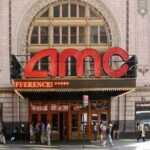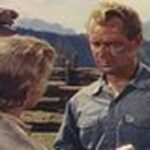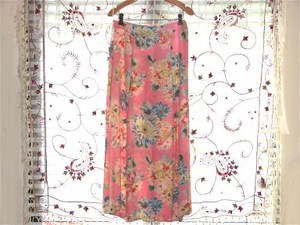Movie buffs often place High Noon and Shane on the top of their list of favorite Western movies. Westerns were popular in the silent film era as well as in the ’30s and ’40s but the American Western reached a new level of maturity in the ’50s in the hand of intelligent directors like Fred Zinneman (High Noon) and George Stevens (Shane). Zinneman also directed From Here to Eternity (1953) and A Man For All Seasons (1966). According to AMC’s Filmsite Steven’s is “film is often considered the second film of his ‘American trilogy’ between A Place in the Sun (1951) and Giant (1956). Shane received six Oscar nominations. High Noon won four Oscars. One of the interesting things about Shane and High Noon is that they very different; Shane is the classic Western and High Noon is the classic anti-Western. At the same time, both movies transcend the Western genre and touch on deeper existential issues such as innocence and guilt, good versus evil, moral ambiguity, and so forth.
Stories about the American West always intrigued the American public and proved to have strong market appeal. In the second half of the 19th century the new genre of the “dime novel” helped to popularize figures such as Buffalo Bill, Wild Bill Hickock, Wyatt Earp and Jesse James. Traveling Wild West Shows were popular and profitable with American Audience. Buffalo Bill’s Wild West Show ran from 1883 to 1913. The novels of Zane Grey, Louis L’Armour, as well as the German author Karl May, helped turn the Western into a popular form of American literature. The tales and stories presented in the novels and in the theatrical extravaganzas of the Wild West Shows were fictionalized and glamorized accounts of life on the frontier. Nevertheless, the myth of the Old West and frontier touched an emotional core in the American public. In fact, the appeal of the West extended beyond
As mentioned above High Noon (1952) and Shane (1953) are generally regarded as two of the most significant films of the Western genre. Both films actually transcend the Western genre. Both films made the American Film Institute’s top 100. Shane is # 45 and High Noon is #27 on the list. In an article in the New York Times Woody Allen refers to Shane as his favorite American movie. Allen was a movie buff as a kid growing up in Brooklyn. Allen was asked to make a list of his favorite American films and to select his favorite one on the list. He said:
“In the end, looking over my list of great American films, I finally settled on ‘Shane.’ This is an odd choice in one sense, because I don’t like westerns. I like ‘The Ox-Bow Incident’ and ‘High Noon’ and care a bit but considerably less about a few others, but ‘Shane,’ I think, is a great movie and can hold its own with any film, whether it’s a western or not.”
It is not surprising that Woody Allen who is so steeped in the urban culture of New York City and whose predilection for the foreign films of Federico Fellini, Ingmar Bergman, and Akira Kurosawa would not be a big fan of the American Western. On the other hand, it is interesting that Shane tops his list of favorite American movies and that he mentions High Noon and the Ox-Bow Incident. Allen’s own films are saturated with the existential angst and questions of meaning that are typical of Fellini, Bergman, and Kurosawa’s films. Kurosawa’s large screen epics have more than a little in common with the American Western. Kurosawa’s masterpiece The Seven Samurai (1954) was remade as a Western titled The Magnificent Seven (1960).
Shane and High Noon are very different films. On a visual level, Shane epitomizes the classical Western stereotypes such as imposing landscapes, historical conflicts between homesteaders and cattle barons, nature versus culture. Shane (Alan Ladd’s character) is the quintessential Western hero who mysteriously appears and aids homesteader Joe Starrit (Van Heflin‘s character) in his battle with the cattle barons. Shane is full of action, fist fights, arson, murder, and a hired gun slinger (Jack Palance). High Noon, on the other hand, defies Western stereotypes. It focuses on dialogue, there is little action before the end of the movie, the hero (Gary Cooper) lacks confidence, and the film bristles with moral ambiguity. This led John Wayne to say that High Noon was “the most un-American thing I have ever seen in my whole life.” Shane is full of action, fights, gunfights, and so on. There is very little action in High Noon until the final climax of the movie. On the other hand, Filmsite.org claims that High Noon “is possibly the all-time best Western film ever made.”
One of the interesting things which High Noon and Shane share in common is an atmosphere of moral ambiguity. I mean ambiguity in the sense that not everything can be clearly and distinctly defined. Both films leave plenty room open for questions and debates. Both Shane and High Noon look at the issues involved through the eyes of innocence. The storyline and characters in Shane are perceived primarily through the perspective of Joe Starret’s young son Joey. Joey is the one who first sees Shane and is the last one to see him in the film as well. Joey is uncertain if Shane is good or bad at first, he contrasts Shane’s actions with his father’s actions, he admits to his mother that he thinks he loves Shane as much as he loves his father. Joey’s mother (Jean Arthur) struggles with her own feelings for Shane as well. Hign Noon bristles with moral ambiguity both in terms of the film itself, the political context in which it was written and the film’s reception. The perspective of innocence in High Noon is represented by Will Kane’s (Gary Cooper) wife Amy (Grace Kelly). Kane and Amy’s wedding is the opening scene of the movie. He has just retired from being the town sheriff. Amy is a Quaker pacifist. Kane finds out that a killer is coming to town to settle a score with him. Amy gives Kane the ultimatum that she is leaving with or without him. She not only views the events as they unfold but she participates significantly in them as well.
High Noon was made in a Cold War political climate dominated by the Korean War, the Red Scare and the McCarthy hearings Carl Foreman, the screenwriter for High Noon, was subpoenaed by “The House Un-American Committee (HUAC)” that was terrorizing many people in the film industry at the time. The film is often regarded as an allegory of the McCarthy years. However, President Eisenhower loved the film and it was shown three time at the White House during his Presidency.
Shane and High Noon are both classic films that take the Old West as their point of departure. I think the element of moral ambiguity addressed by these films, and the existential issues associated with it, is one of the reasons why the West always had a popular appeal with the American public. The same issues probably resonate with the popularity of gangster films as well.





